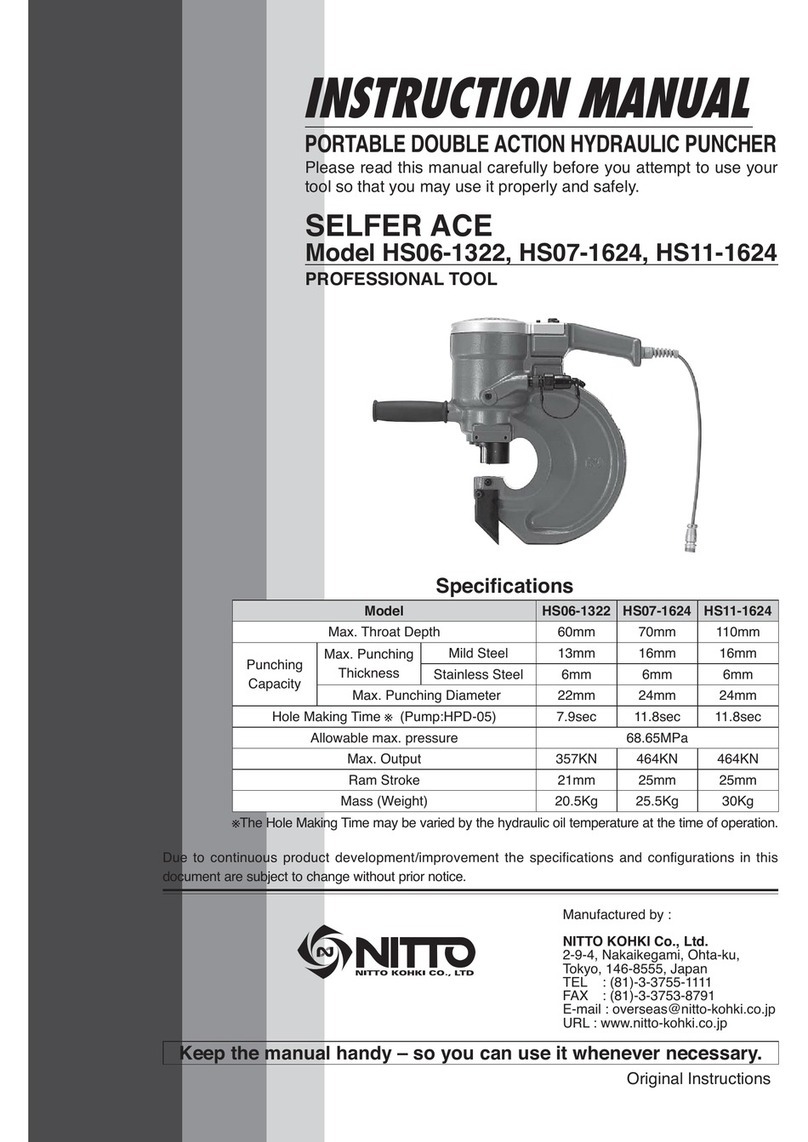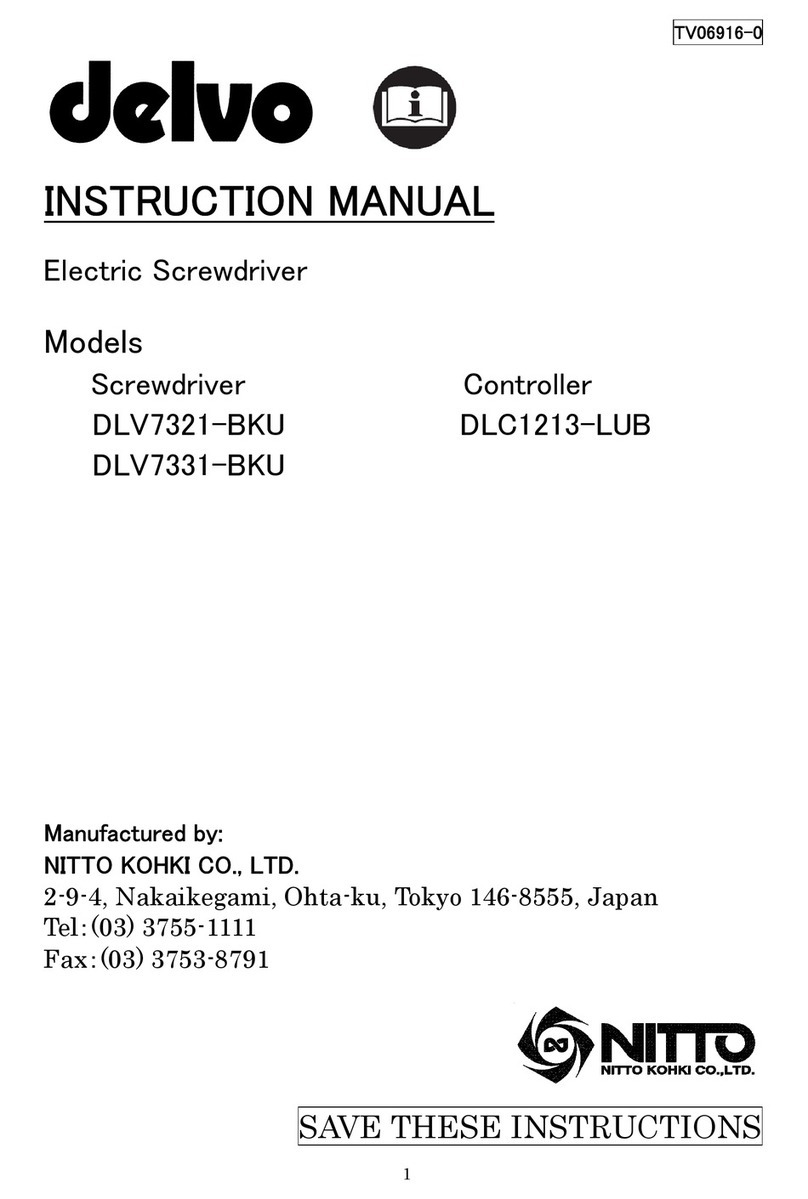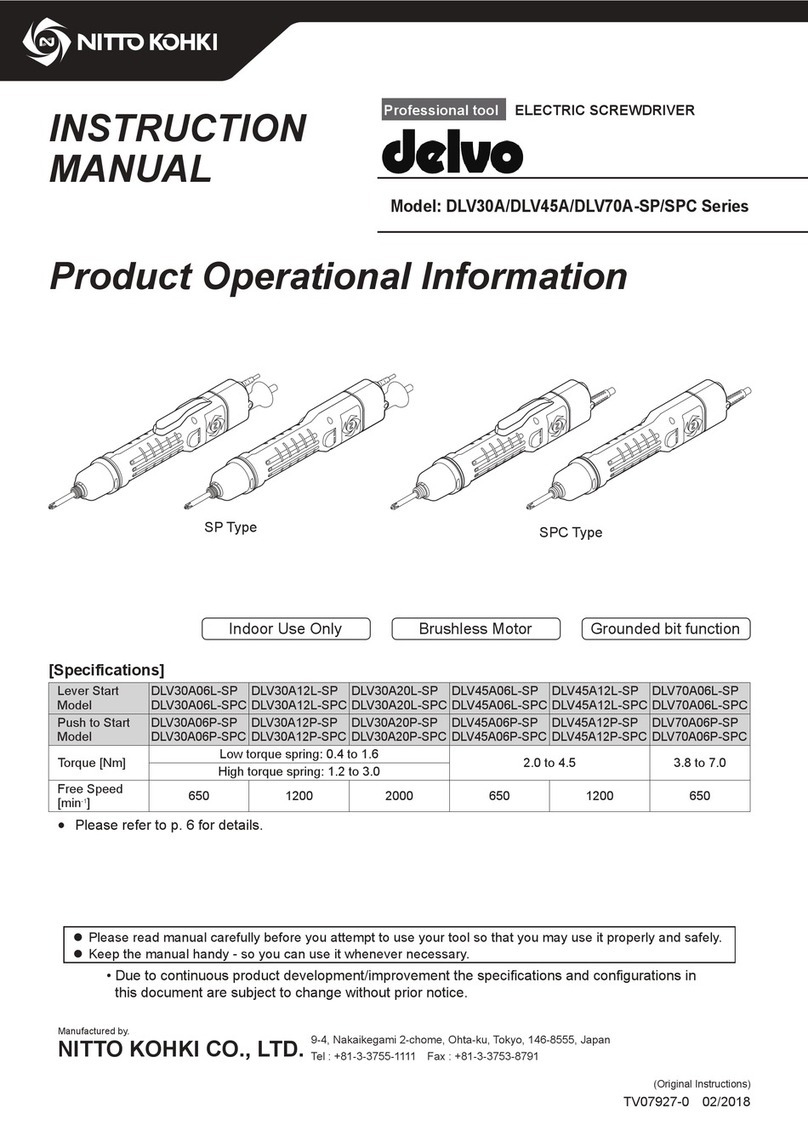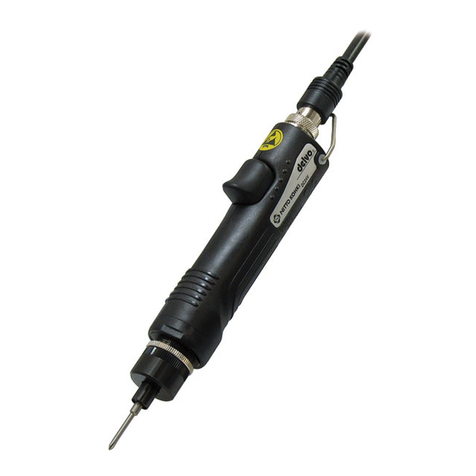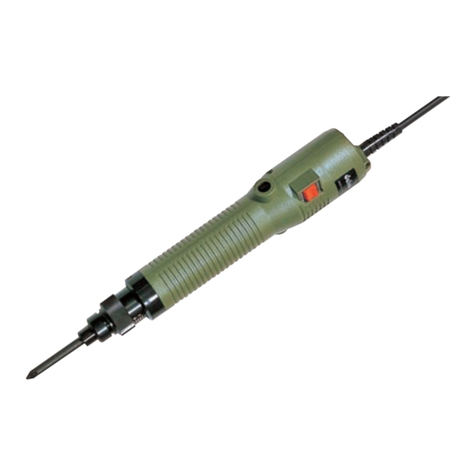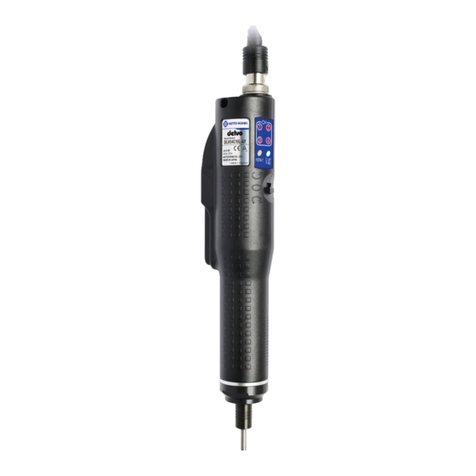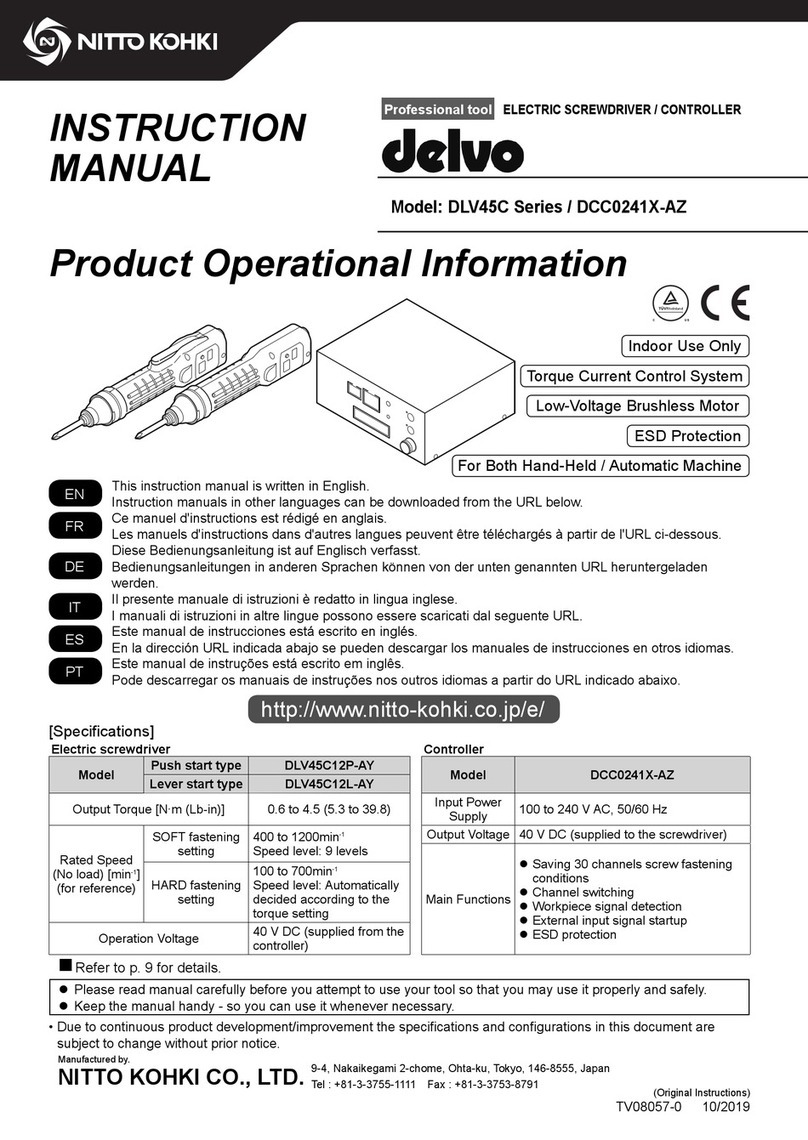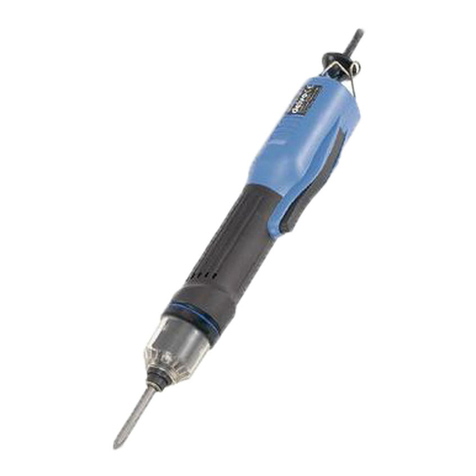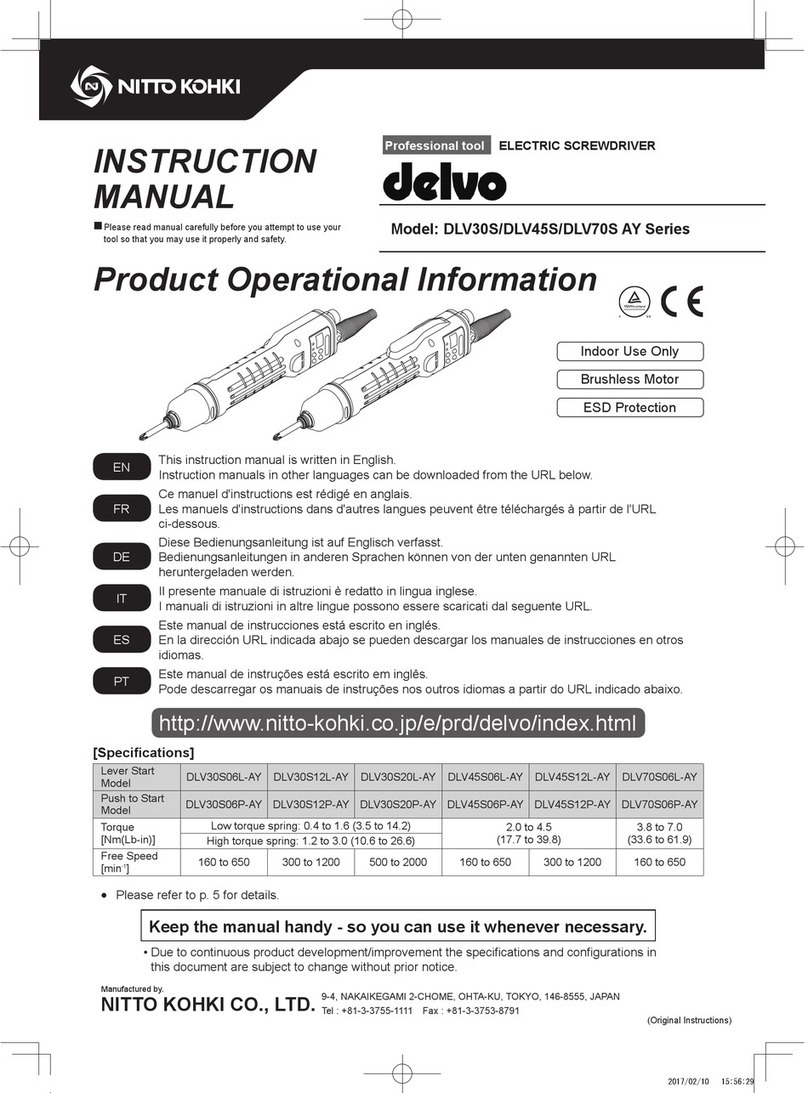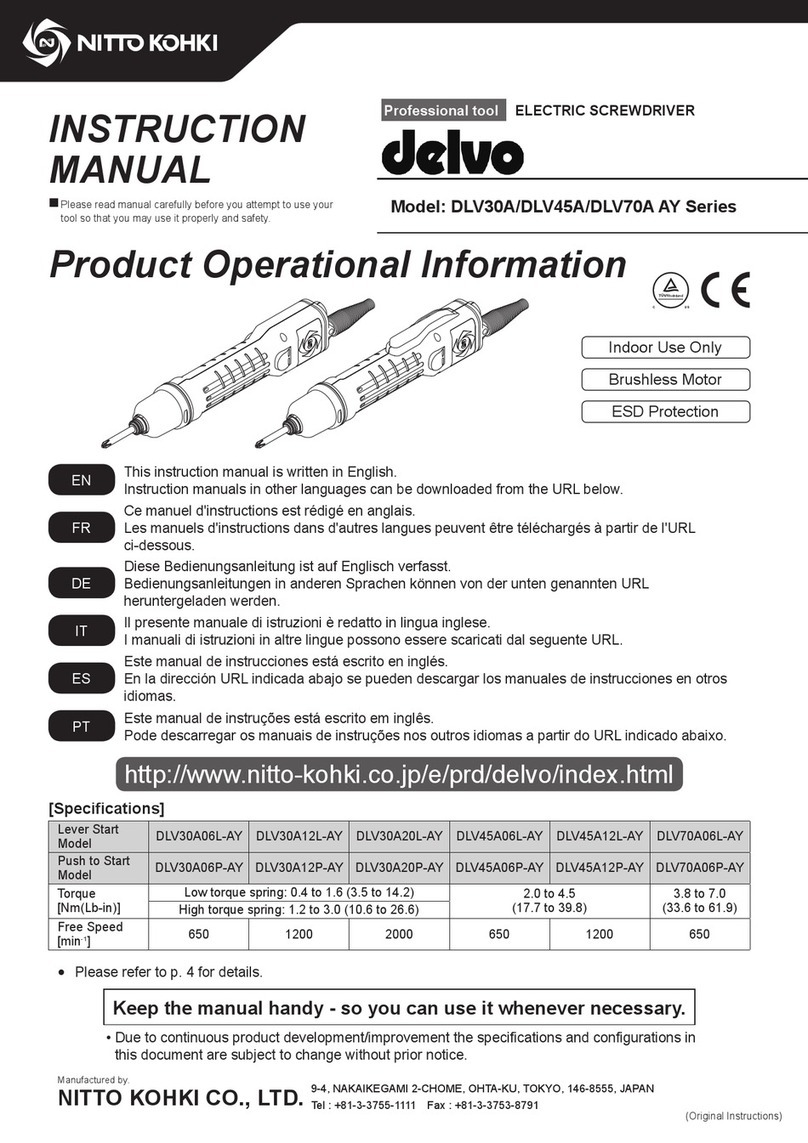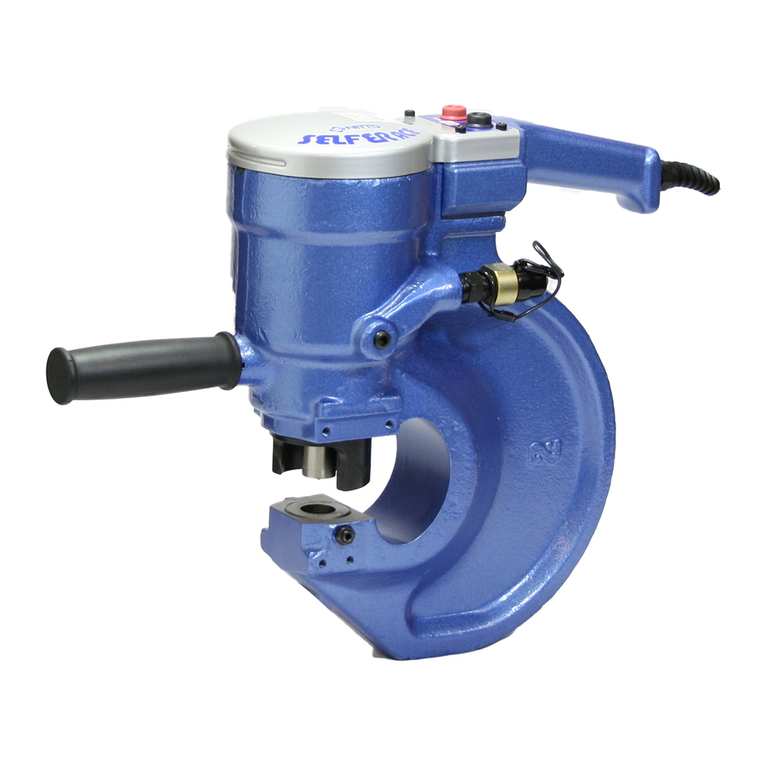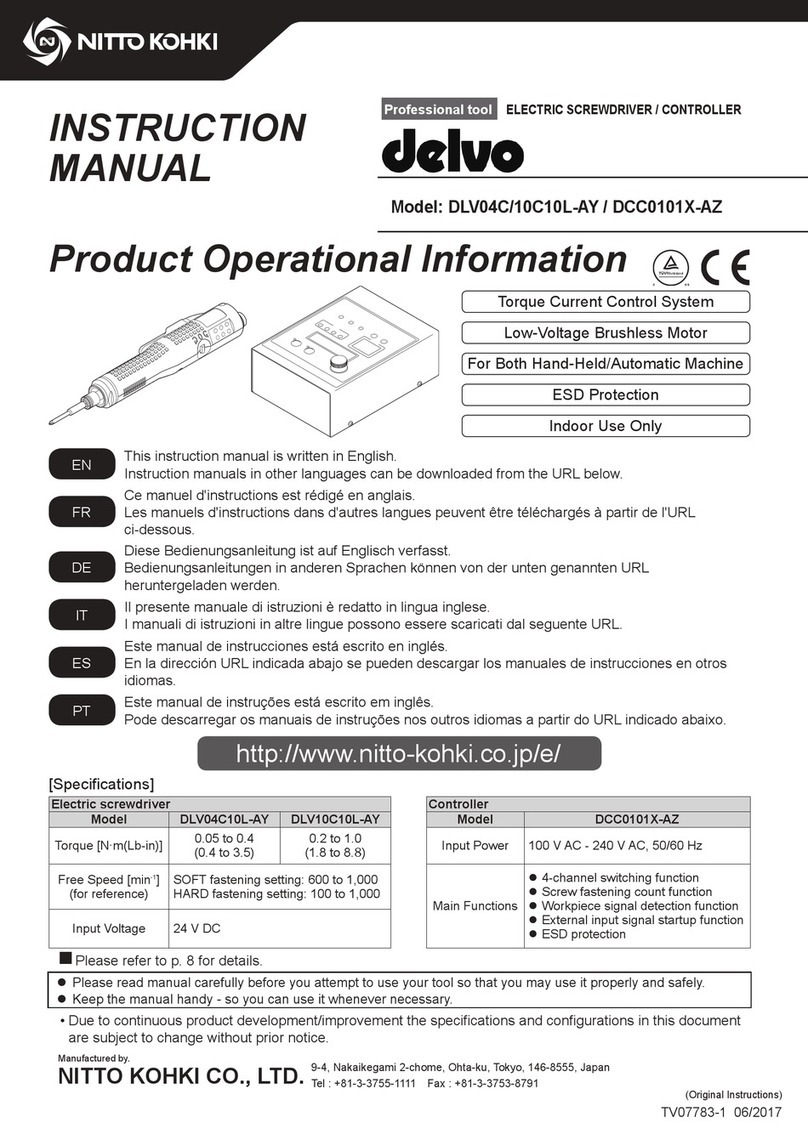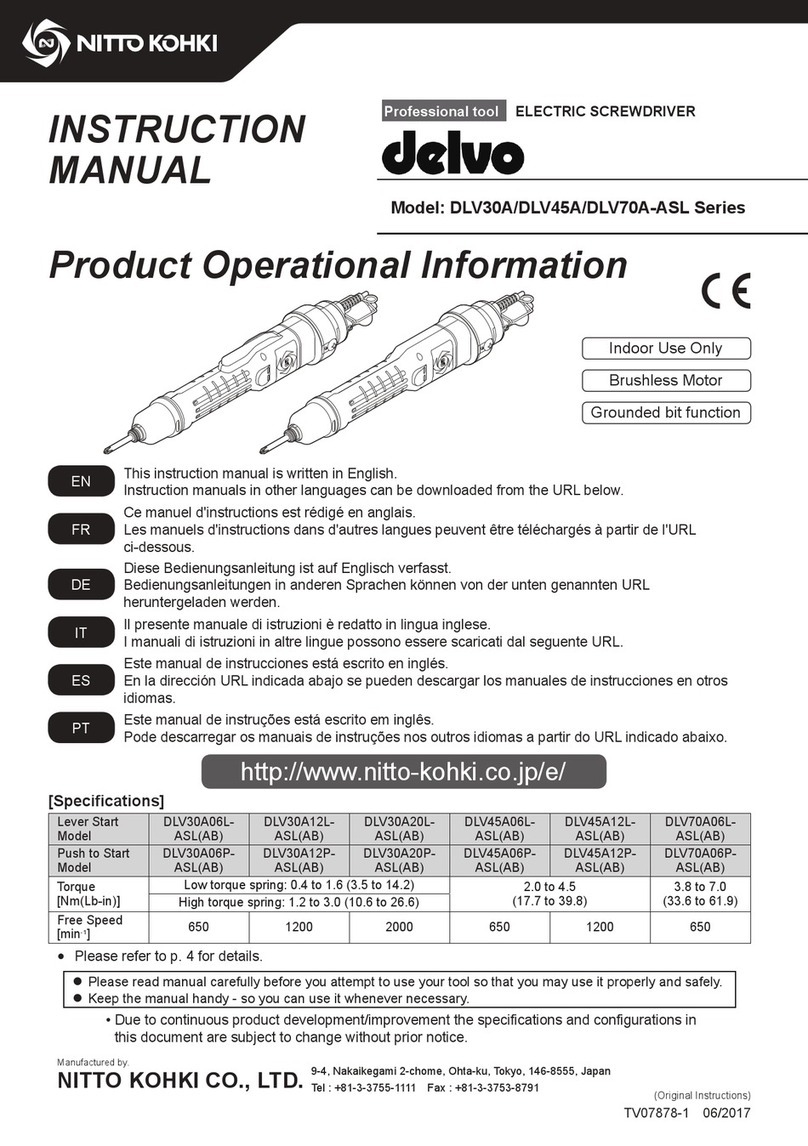
4
EN
Pay special attention to screw tightening conditions (especially tapping screw conditions) and torque to make
sure they are set up properly. Over-screwing could cause overheating. If that happens, modify the screw
tightening conditions.
There is a risk of burns. In addition, it could decrease product life or cause a malfunction. Whenever tapping screws
are used, check the screwing force. If screws are too tight, they could be damaged.
Operate the tool securely. Press the start switch correctly and do not release the start switch until the clutch
becomes operational (for a push type, press against the bit, for a lever type, press the lever switch).
If the start switch is not pushed properly, it could malfunction (the clutch might operate in such a way that it starts
and stops) or fail, damage the screw, or rupture the work-piece.
Do not operate the changeover switch while the tool is rotating.
Doing so could cause a failure.
Do not apply a shock (such as dropping) or excessive load to the changeover switch.
Doing so could cause a failure.
Bits are expendable parts. They are not covered under warranty.
Inspect regularly for abrasion. Durability can vary tremendously depending on the conditions of use. If a bit is worn
out, it cannot be used to tighten screws correctly. Slip and backlash can occur at the fitting portion of the screw (the
screw head), and could cause damage or cause torque to not be transmitted correctly.
The torque of the electric screwdriver decreases over time. Inspect the torque regularly and use appropriate
torque for your use.
Generally, an electric screwdriver has a mechanical clutch system, and the more it is used, the more the clutch will
start to wear. When the clutch portion becomes worn, the torque decreases. Maximum torque decreases faster than
minimum torque. By using the correct torque, the screwdriver will last longer.
The speed will vary by tool.
The speed changes based on the temperature of the main body.
The torque scale is a standard.
The output torque range is not guaranteed. Make sure to measure the torque.
General Rules For Tightening Of Screws
CAUTION
The electric screwdriver torque measured by the Torque Checker (torque sensor) is different from the torque
generated at the screw.
The torque of the electric screwdriver creates certain conditions at the measurement joint and torque is measured
using the Torque Checker (torque sensor). The torque generated at the screw changes based on the screw (type,
size, material, surface roughness, etc.), work-piece (the material, hole diameter, screw tightening depth, surface
roughness, stiffness, temperature, etc.), the fit of the bit against the screw, the tightening speed, lubricant, and
human factors (how it is held or the way it is being pressed, such as diagonal tightening).
Control the torque properly.
Be sure to test more than once based on actual screw tightening conditions (work-piece and other conditions). Test
frequently.
Operating Procedure
(1) Under actual screw tightening conditions, use the screwdriver to tighten the screw.
(2) Using a torque wrench, etc., make sure the screw is tightened at the target torque
(check using the loosening torque methods or retightening torque methods).
(3) If the screw is not tightened at the correct torque, adjust the screw using the electric screwdriver torque. Use the
electric screwdriver to tighten again.
(4) If it is tightened at the correct torque, use the Torque Checker (torque sensor) to maintain the electric
screwdriver torque.
Set the value of the actual screw tightening torque based on the tolerance from the torque of the electric
screwdriver (standard deviation) and the tolerance of the screw tightening conditions (torque coefficient).
We offer information about the repetitive torque accuracy of the electric screwdriver as technical data. For details,
contact the retailer where you purchased your screwdriver or our company.
Depending on the speed, the displayed value of the Torque Checker (torque sensor) changes even with the same
setting.
At the measuring joint, certain conditions are created; however, since the impact value fluctuates based on the
speed, the value displayed on the Torque Checker changes. The torque value of the electric screwdriver does not
change. Low-speed rotation has less impact, and tends to suppress the tolerance of screw tightening conditions
(torque coefficient). However, low-speed rotation needs to be held in the hand longer, causing recoil to increase as
a result.
TV07520-1DLV30S12P-AYKenfrdeitespt.indb4 2017/06/3011:33:01

